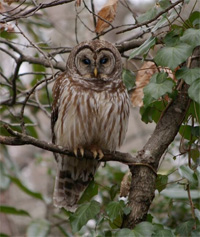Landscapes and Natural Green Space
 We believe that everyone should have a little “green space.” We believe that this green space does not need to be a perfectly manicured lawn or a perfect looking garden. If you are fortunate to have a yard, then some of it can be kept in its natural state, and connected to other such areas to create a local wildlife habitat.
We believe that everyone should have a little “green space.” We believe that this green space does not need to be a perfectly manicured lawn or a perfect looking garden. If you are fortunate to have a yard, then some of it can be kept in its natural state, and connected to other such areas to create a local wildlife habitat.
We think that cities often allow developers too much leeway to destroy habitats and eliminate forests, based on a promise to create parks for the people. Often these parks are complete with parking lots, sidewalks, picnic shelters, fences, playgrounds, lighting, large lawns, irrigation systems and ornamental trees. While new public parks are always nice, sometimes these “parks for the people” provide little support for the native flora and fauna, and are not a very good substitute for the natural area that was eliminated. Often they have too much hardscape and not enough shade.
“Many cities are huge, inefficient structures, excessively wasteful of energy and water. Neighbourhoods, even those recently built, are congested, chaotic and lacking in sufficient green space. We were not meant to be inundated by cement, asphalt, glass and metal, and deprived of physical contact with nature.” [Pope Francis, Laudato Si’ encyclical, par. 44]
 There are many actions we can take to preserve our urban forests – at home, in our neighborhoods, at work, at school and at church. For example:
There are many actions we can take to preserve our urban forests – at home, in our neighborhoods, at work, at school and at church. For example:
- Protect and plant native trees and plants
- Connect your back yard to others in your neighborhood
- Create a wildlife habitat
- Start a community garden
- Use the right amount of fertilizer on your lawn
- Get involved with local development plans in order to preserve more of the natural habitat


